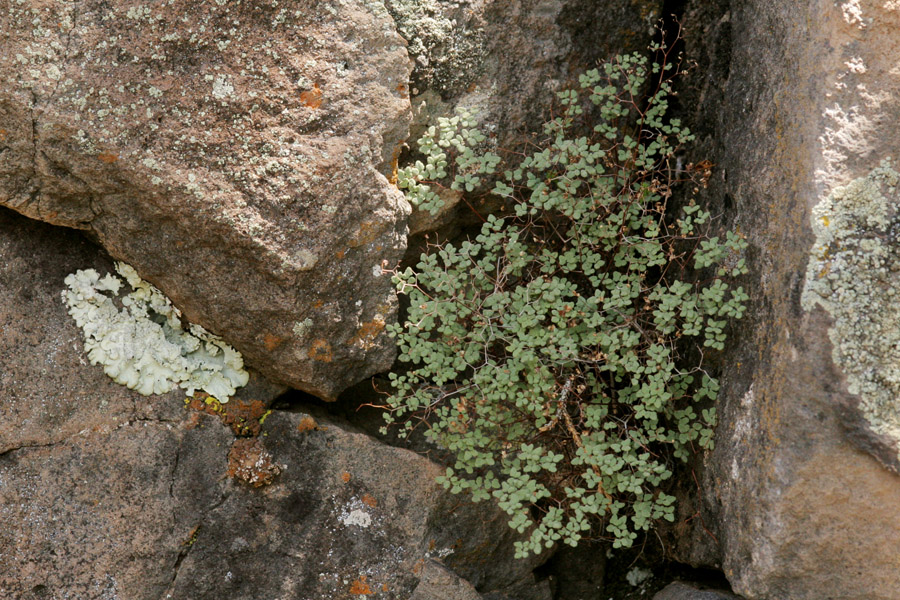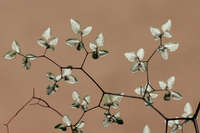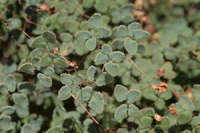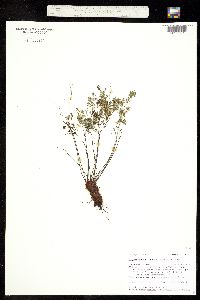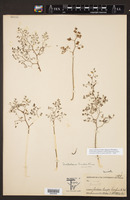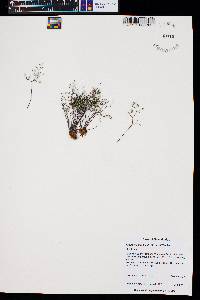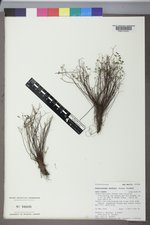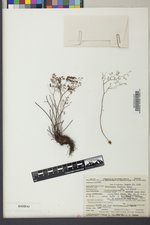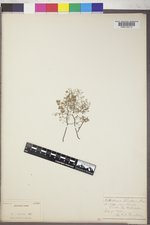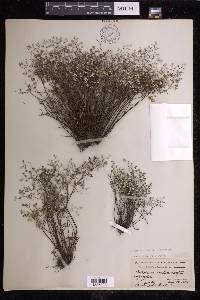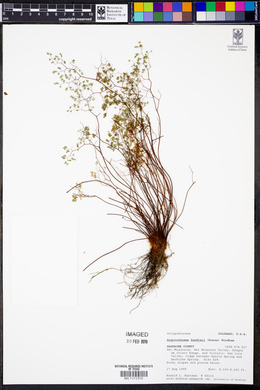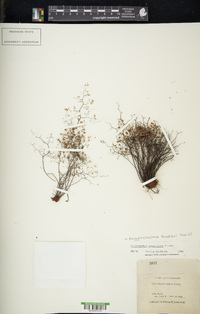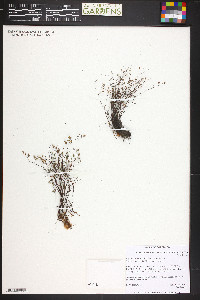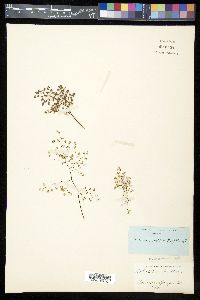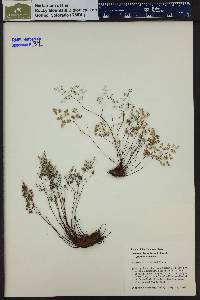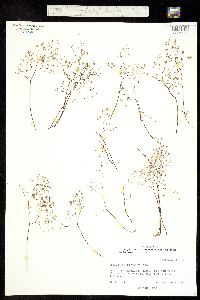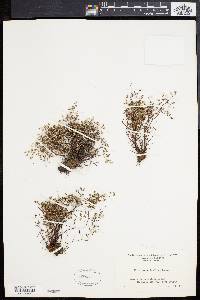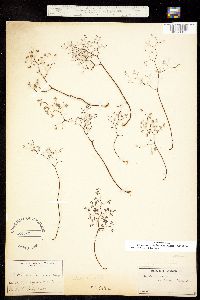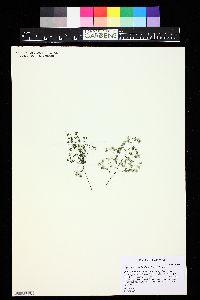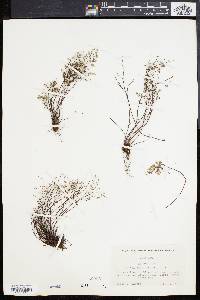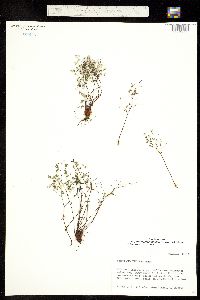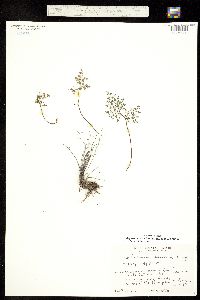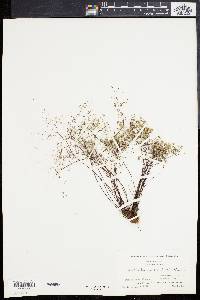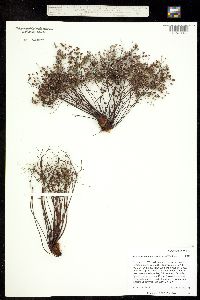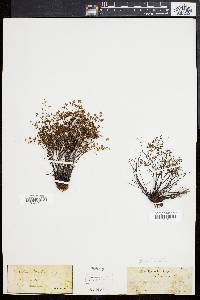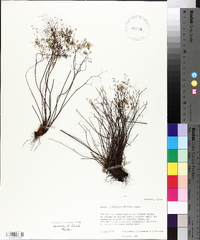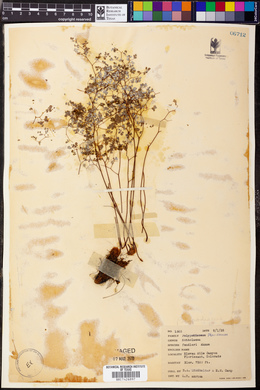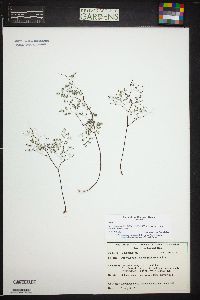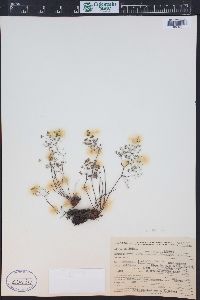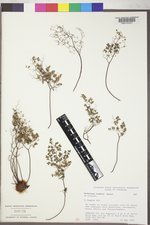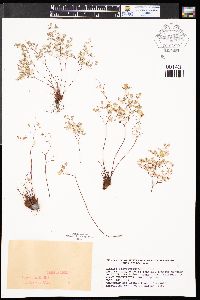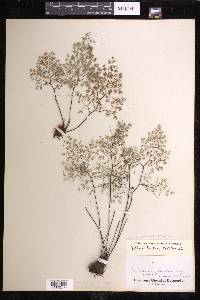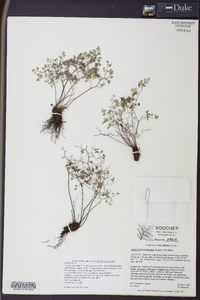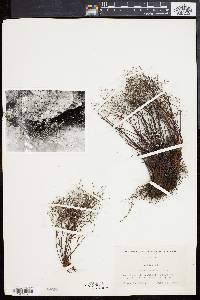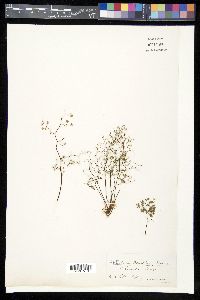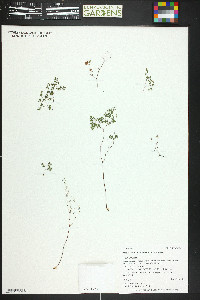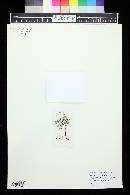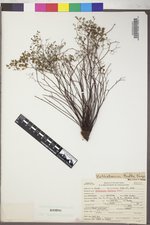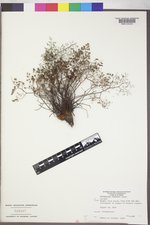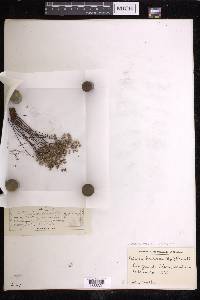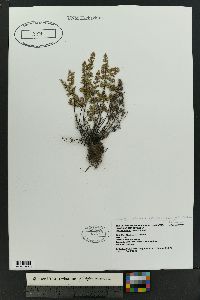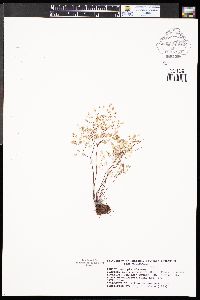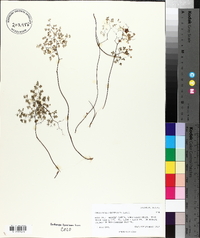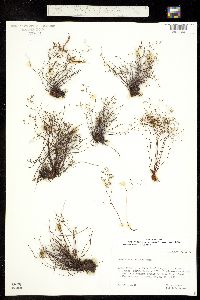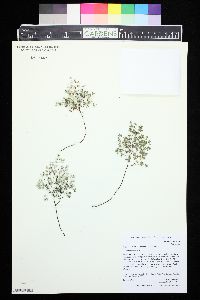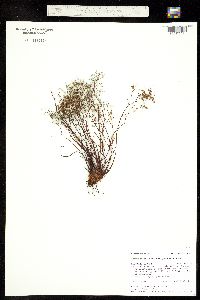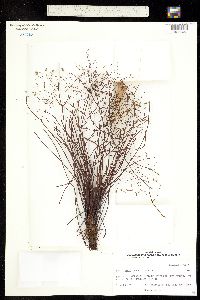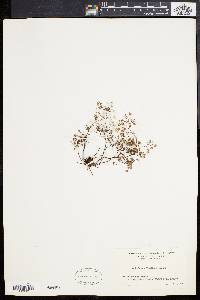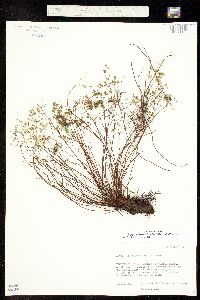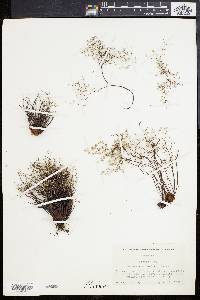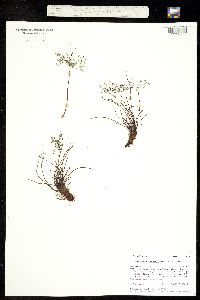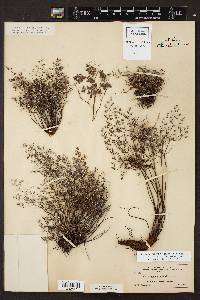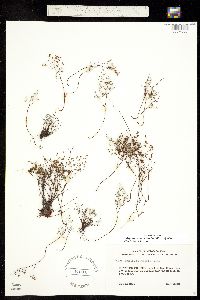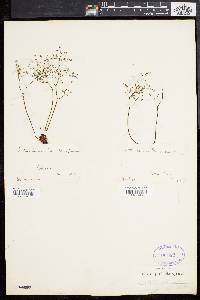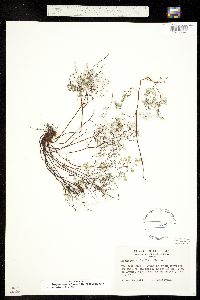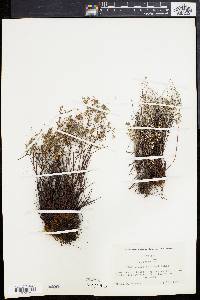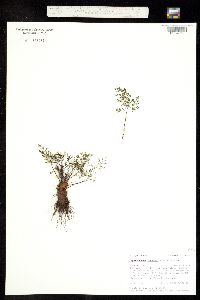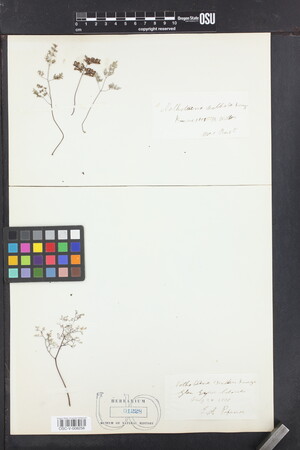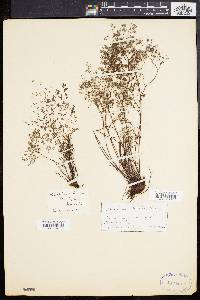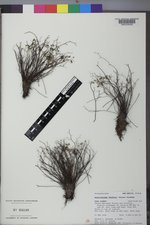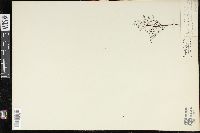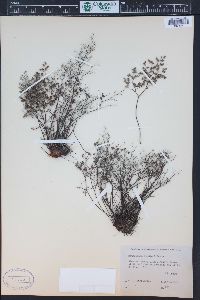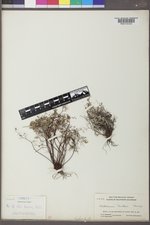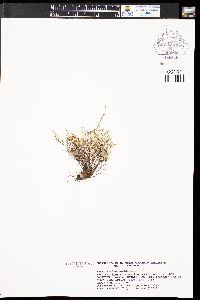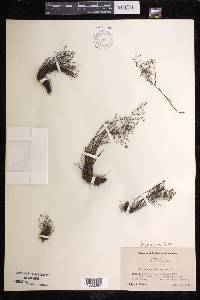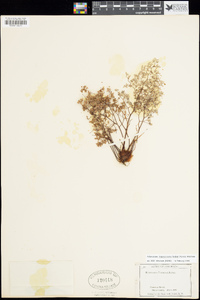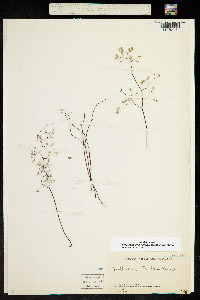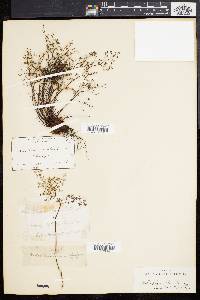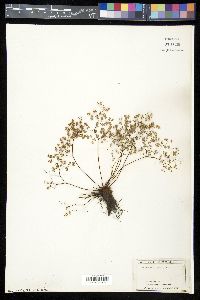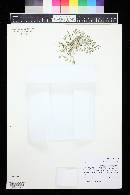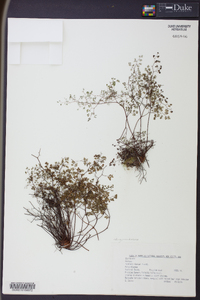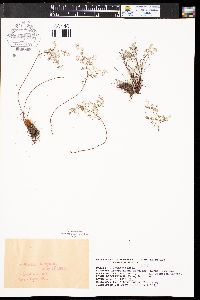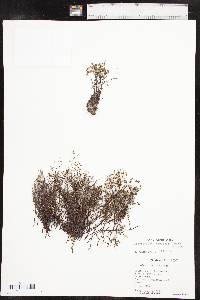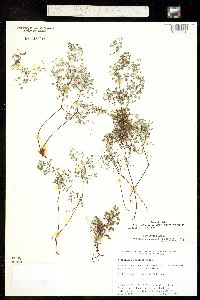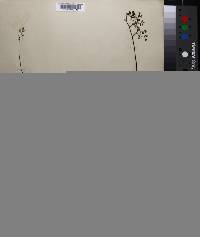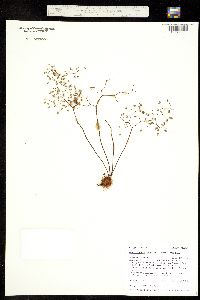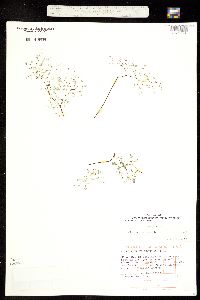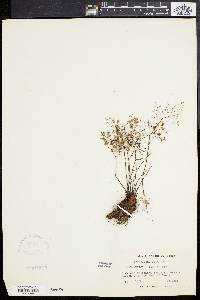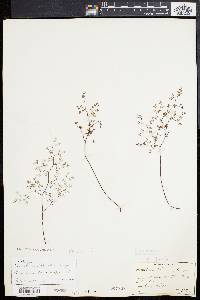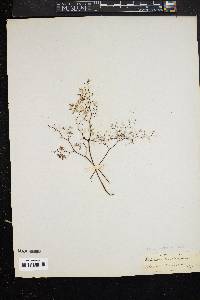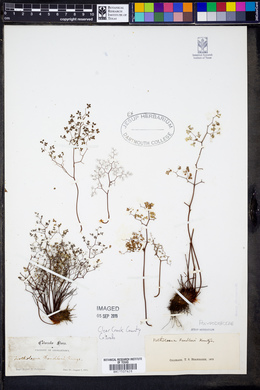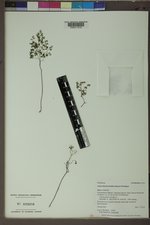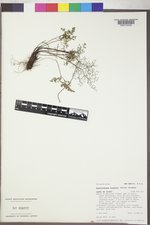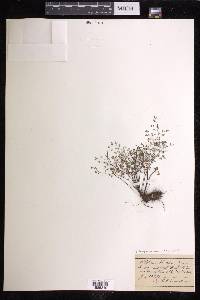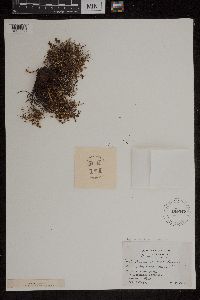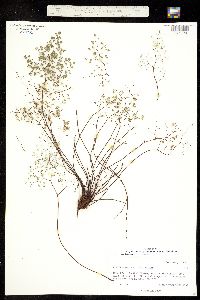
|
|
|
|
Family: Pteridaceae
Fendler's False Cloak Fern
[Cheilanthes cancellata J.T.Mickel, moreNotholaena fendleri ( ex Kunze) Kunze, Pellaea fendleri (Kze.) Prantl.] |
Stem scales brown. Leaves 5--25 cm. Petiole dark brown, 0.75--1.5 mm diam. Blade deltate, 4--6-pinnate proximally, leathery to somewhat herbaceous, abaxially covered by whitish farina, adaxially glabrous or glandular; rachis rounded adaxially. Pinna costae distinctly flexuous, branches arising from prominent angles. Ultimate segments not articulate, dark color of stalks continuing into segment bases abaxially; segment margins plane to recurved, often partially concealing sporangia; veins usually obscure adaxially. Sporangia submarginal, borne on distal 1/4 of secondary veins, containing 64 spores. 2 n = 54. Sporulating summer--fall. Rocky slopes and cliffs; usually on granitic or volcanic substrates; 1700--3000 m; Colo., N.Mex., Wyo.; Mexico in Sonora. Argyrochosma fendleri is occasionally confused with A . limitanea , which can have slightly flexuous rachises and pinna costae. All A . limitanea specimens with slightly flexuous rachises and costae have 32 spores per sporangium, whereas specimens of A . fendleri consistently have 64. This southern Rocky Mountain species is the only member of the genus that is found on acidic substrates such as granite.
FNA 1993, Windham 1987, Dittmer et al 1954, Lellinger 1985, Allred and Ivey 2012 Common Name: Fendler's false cloak fern Rarity: None General: Fern, 5-25 cm tall, from a short, stout rhizome which is densely covered with orange-brown, lanceolate scales. Leaves: A cluster of fronds emerges directly from the rhizome; petiole dark brown, 3-16 cm long, round or slightly flattened in cross section; blade triangular in outline, 4-6 times pinnate, with a flexuous, zig-zag rachis (leaf center stalk) and alternate branching to smaller rachillas until the ultimate pinnae (leaflets) are reached; ultimate leaflets are ovate to elliptical or lanceolate, the upper surface glabrous and the underside densely white-farinose (covered with a flour-like substance). Sporangia: Sporangia (spore-cases) located on the underside of the leaflets, around the edges; the leaf margin is often curled under to partially cover the sporangia. Ecology: Found in crevices among rocks, often on limestone in dry sites, from 5,500-10,000 ft (1676-3048 m); sporulates in summer and fall. Distribution: NM, CO, and s WY Notes: This species is easy to distinguish because of the zig-zag alternate branching of the frond stalks, and the white farinose underside of the leaflets (to the naked eye, the leaflet undersides look white with a darker edge; look at it using your hand lens and you'll see the surface is covered with white floury substance, with darker colored sporangia dotting the outside edge of the leaflet.) This species is most similar to A. limitanea, which also has white-farinose leaves; distinguish between the two species based on the overall shape of the frond (A. fenderi has fronds which are trianguar in outline, while A. limitanea has usually narrower fronds); and the leaf central stalk, or rachis, which zig-zags in this species but does not zig-zag in A. limitanea. Ethnobotany: A poultice of the plant was applied to lips for cold sores. Etymology: Argyrochosma comes from Greek argyros, silver and chosma, powder, a reference to the powdery substance on the leaves; fendleri is named for Augustus Fendler (1813-1883) a German plant collector who worked for Asa Gray. Synonyms: Cheilanthes cancellata, Notholaena fendleri, Pellaea fendleri Editor: SBuckley 2010, AHazelton 2017 |
This project was made possible in part by the Institute of Museum and Library Services [MG-70-19-0057-19].
Powered by Symbiota

